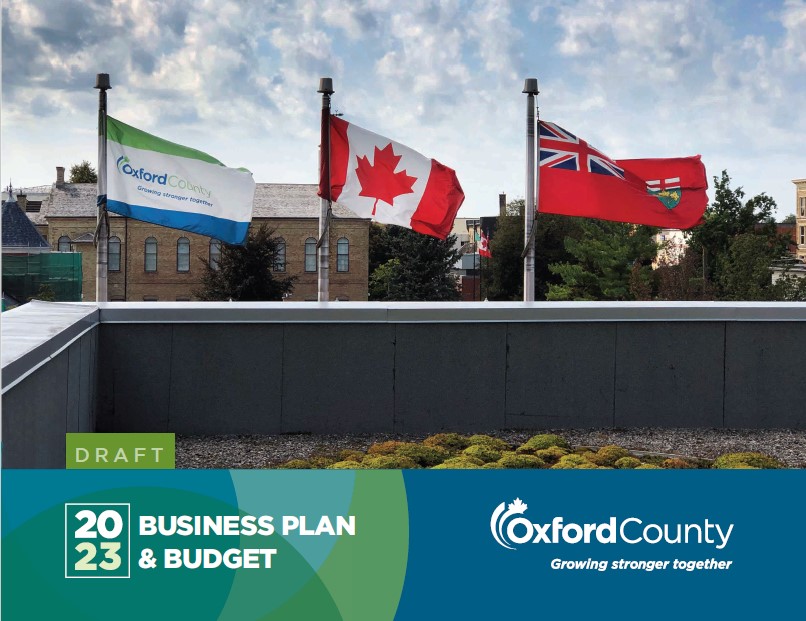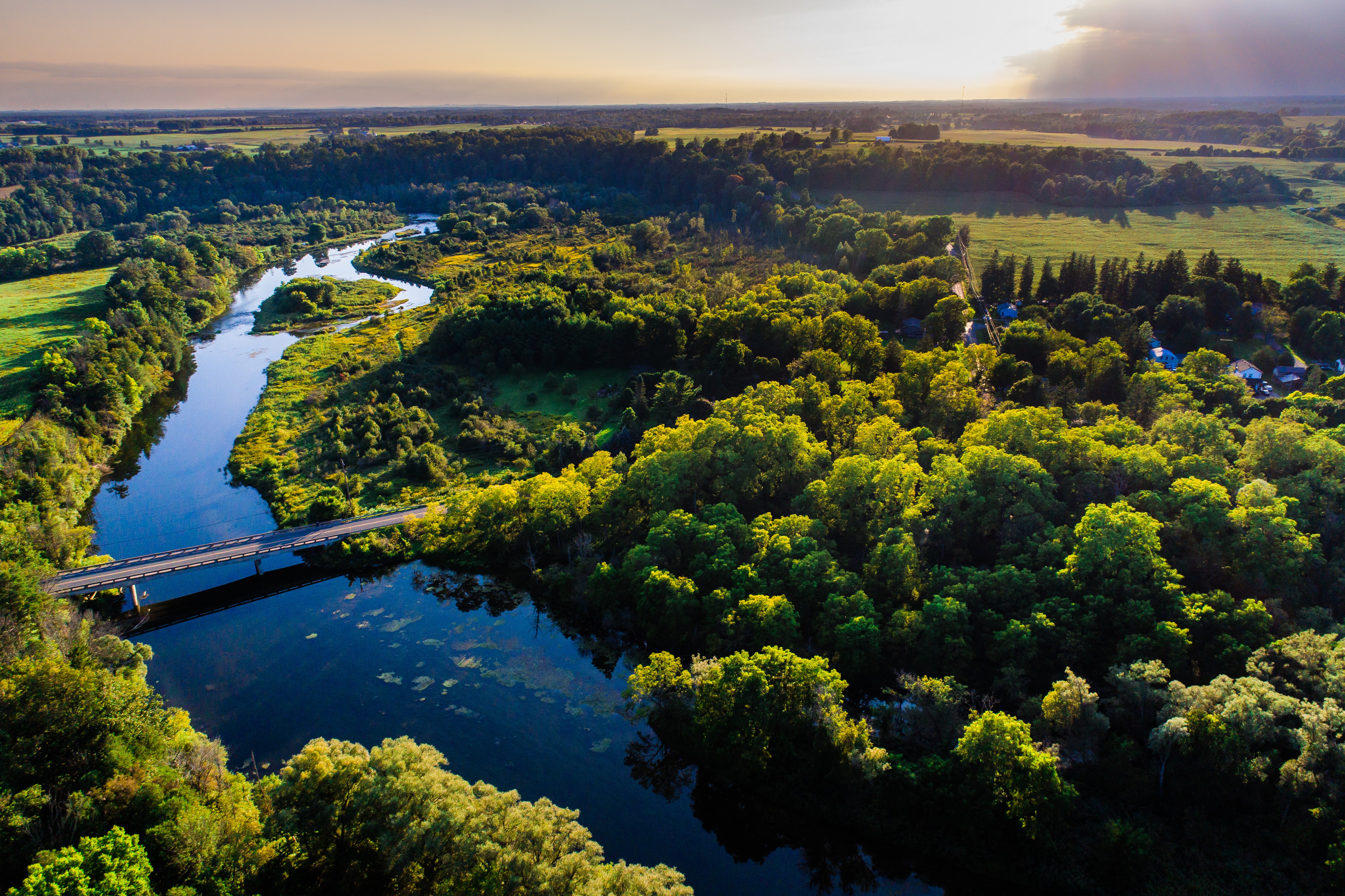Oxford County releases 2023 Draft Budget
Proposed budget for next year focuses on maintaining services while advancing affordable housing, infrastructure sustainability, and long-term care
 County Council receives the Draft 2023 Business Plan and Budget on November 23, bringing forward a proposed total budget of $305 million to maintain County programs and services through another year of post-pandemic inflationary pressures. The consolidated base budget increase with one-time budget costs separated out is set at 3.8%, compared to the current year-over-year consumer price index increase of 6.9%.
County Council receives the Draft 2023 Business Plan and Budget on November 23, bringing forward a proposed total budget of $305 million to maintain County programs and services through another year of post-pandemic inflationary pressures. The consolidated base budget increase with one-time budget costs separated out is set at 3.8%, compared to the current year-over-year consumer price index increase of 6.9%.
The draft budget projects a general levy increase-- the amount to be collected through property taxes-- of $70.3 million, a 5.7% increase over 2022.
While rising costs for supplies, fuel and insurance have an impact on the Draft 2023 Budget, it maintains a focus on the County’s key priorities, including expanding affordable housing and addressing homelessness, investing in public works infrastructure for the County’s growing communities, and responding to Ontario’s Fixing Long-Term Care Act at Woodingford Lodge.
Highlights of the budget’s $84 million capital plan include:
- multi-year construction upgrades to the Tillsonburg Wastewater Treatment Plant;
- capacity expansion of the Drumbo Wastewater Treatment Plant;
- water/wastewater servicing of various employment lands; and,
- renewable energy projects, green fleet and electric vehicle charging infrastructure.
A proposed $53.1 million would be invested in capital reserves to fund future asset management (infrastructure) projects, such as those to support water, wastewater, facilities, bridges and culverts, roads, and storm sewers.
Also included in the proposed budget are 13 new strategic initiatives, including:
- new affordable housing development and related projects, like the secondary unit program and a housing repair program;
- compactor replacement upgrade at the Oxford County Waste Management Facility;
- expanded funding for the Tillsonburg curbside large item collection, leaf and yard waste depot, and Transfer Station;
- agricultural plastic waste diversion pilot program;
- infection prevention and control staffing at Woodingford Lodge; and,
- other projects that improve service and efficiency.
The County’s budget process formally launches with the release of the draft budget package as part of the November 23 Council agenda, and continues with special budget meetings on November 30 and December 5. A final proposed budget is expected before Council for approval on January 11, 2023.
All Council meetings are open to the public and can be watched live at start time at www.oxfordcounty.ca/livestream. For more information on the County’s 2023 Budget, including Council presentations and past recordings, visit www.oxfordcounty.ca/2023budget.
Comment
Ben Addley, Interim CAO, Oxford County
“As the first budget of the new Council term, the 2023 Budget is Council’s first opportunity to speak to its priorities for the next four years. Staff has worked over the past five months to bring forward a responsible budget that makes progress on key areas of focus, including affordable housing and infrastructure to support our growing communities, while also working to mitigate rising costs in almost every area of operations.”
Quick facts
- In Oxford County, municipal property taxes are collected by local area municipalities and distributed among the following, each setting their own rates:
- school boards, for education;
- area municipalities, for services and infrastructure provided by the eight local municipalities, such as recreation, fire and police, local roads and bridges, etc.; and,
- Oxford County, which provides services such as human (social services), community planning, paramedic services, garbage and recycling, water and wastewater, County roads and bridges, library (except for Woodstock), provincial offences administration, long-term care, and more.
- Oxford County services are funded through a range of sources, including federal and provincial funds, development fees, reserve funds, and user fees. The County’s four financial water systems and 11 wastewater systems are each managed independently and are fully funded by water and wastewater rates collected through utility bills. Garbage and recycling collection is partially funded through bag tag fees.














